Anúncio
Collapse
No announcement yet.
American Muscle - O Tópico!
Collapse
Ads nos topicos Mobile
Collapse
Ads Nos topicos Desktop
Collapse
X
-
Alguns dos meus favoritos, bastante arrojados por sinal:
1971 Plymouth 426 Hemi Cuda
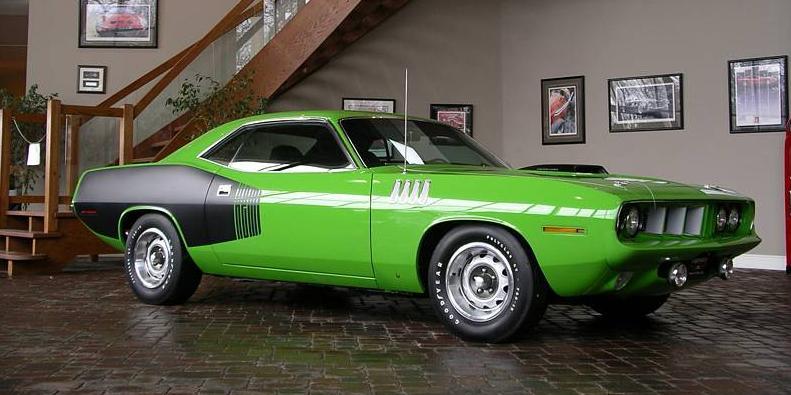
The baddest of the 1970 Plymouth Barracudas or Hemi Cudas featured a 425 bhp 426 hemi engine. This muscle car boasted a 0-60 mph in 5.6 seconds and was known for burning rubber without much prompting. A brute on the road, the Hemi Cuda was made for muscle lovers. The Hemi Cuda came in one engine size, 426, while the other four engine options for the ‘Cuda did not have hemispherical heads.
1966 Shelby Cobra S/C
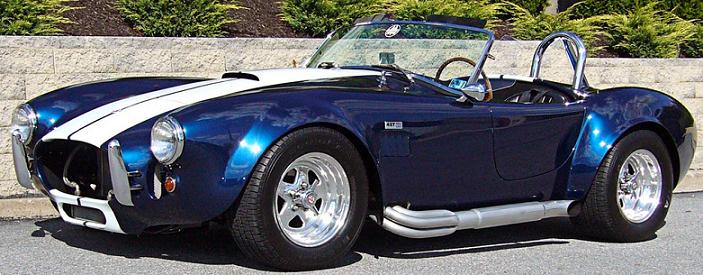
Thought to have too much power for its chassis, the 1966 Shelby Cobra 427 S/C featured an impressive 480 bhp. This sporty little number looked like a European sports car, yet had the muscle to prove it was American. Two twin turbocharged versions of this super car were made – one for Bill Cosby and one for Shelby. Cosby sold his because it had too much power and the next owner put it in a lake; Shelby’s Super Snake was sold in 2007 for $5.5 million US.
1969 Yenko Camaro
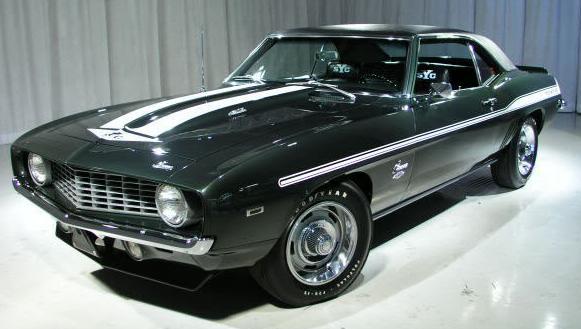
1968 Shelby GT500 KR
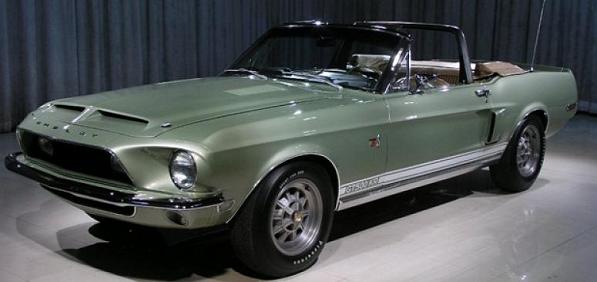
1969 Chevy Camaro ZL1
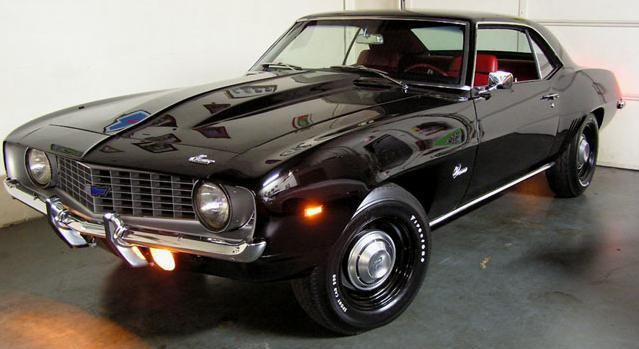
Perhaps one of the rarest of muscle cars, the 1969 ZL1 Camaro featured a jaw-dropping 500 horses under the hood in an aluminum V-8 engine. This bad boy American beast could go from 0-60 in about 5.3 seconds, which was why some of the 69 models made found their way into drag-racing. Over time, the full complement of cars was sold; however, the package option was never offered again.
1969 Ford Mustang Boss 429
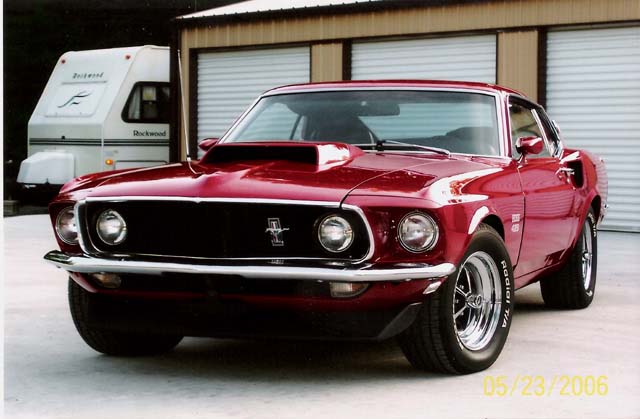
The ‘Boss 429’ 1969 Ford Mustang was the costliest non-Shelby Mustang Ford offered at the time. The reason came down to the semi-hemi 429 engine that Ford wanted to get into NASCAR. While the car was not built for its screaming starts, it was known for long-haul racing capabilities and smooth handling.
1968 L88 Corvette
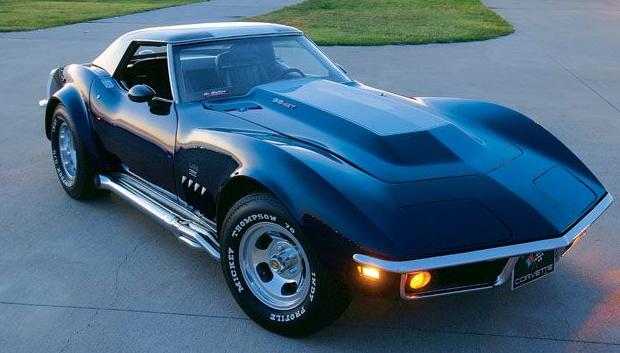
Boasting a top speed of about 170 mph with a special order package, the 1968 L88 Corvette is thought to be the end-all, be-all in the Corvette world. The 550 bhp motor was designed specifically for racing and GM didn’t want the L88 on the open road due to its power. More standard features of everyday cars such as air conditioning and a radio weren’t even offered to make this powerful car less attractive to the common man.
1970 Chevelle SS 454 LS6 convertible
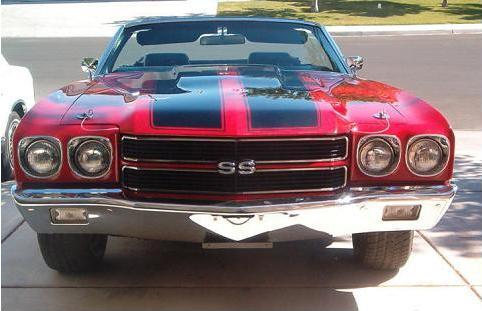
The 1970 Super Sport package Chevelle featuring the LS6 package came in at a whopping 454 horse. The option was standard for the average car buyer of the day making it one of the most powerful stock cars anyone could purchase. With racing stripes and a smooth interior, this muscle monger was the average muscle lover’s dream.
1970 Plymouth Hemi Road Runner Superbird
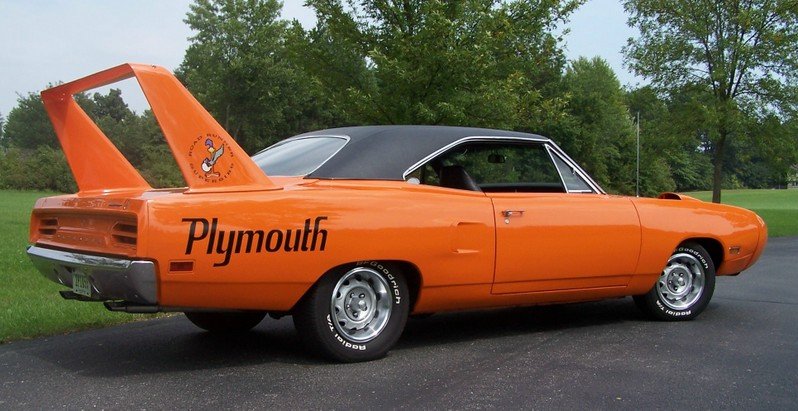
1970 Buick GSX Stage 1
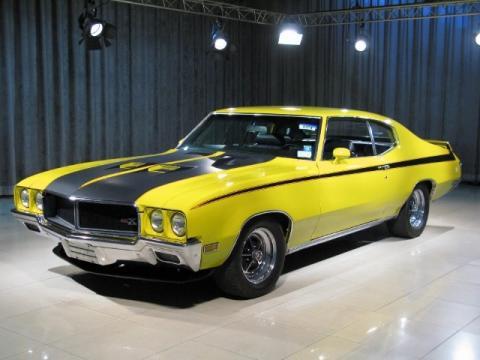
A beefy Buick, the Stage 1 ‘GSX’ performance package boasted 360 bhp though testers said it came in at closer to 400 for the bigger valved, better headed and hotter camshafted car. This supercar did the quarter mile in 13.38 seconds and came in only two colors – Apollo White or Saturn Yellow.Editado pela última vez por GPL; 03 July 2011, 01:13.
Comentário
-
Big Block
A Big block engine is generally a North American V8 (though can be other cylinder arrangements) in a family of engines which generally have greater than 5.9 L (360 cubic inches) of displacement; factory engine sizes reached a peak of 8.2 L (500 cubic inches) in Cadillac's 1970s range. Since then manufacturers have responded to the need for superior engines, as well as the need to replace surviving worn-out, decades-old big-block racing engines which have been rebuilt too many times. In 2002 General Motors released the carbureted Chevrolet 572 Crate engine (9.4L), available for installation in most vehicles which have enough room under the hood, both in a 620 hp (460 kW) street version, which runs on premium gasoline, and a 720 hp (540 kW) version, which requires racing fuel. Mopar (Chrysler) recently released the 528 Hemi (8.7L) and 540 (8.8L) crate engines. Smaller V8 engines are known as small blocks; some members of small-block engine families may exceed 6 L, blurring the distinction somewhat. The distinction came about in the early 1960s when the large full-size cars needed a bigger V8 than the smaller mid-size and compact cars. Before that, manufacturers normally had only one V8 engine line. A good example of a "Big-Small Block" is the Chrysler 360 LA engine. The term is normally used only for engines from the "Big Three" (Ford Motor Company, General Motors, and Chrysler Corporation) since the other companies did not keep two V8 engine size families. Big-block V8s were most commonly used in full-size and luxury cars, rather than performance vehicles. Many big-block engines were less technically sophisticated than their small-block counterparts, and their power-to-weight ratios were often lower. However, they did see performance applications. Performance-tuned big-blocks were used in NASCAR racing, and homologation requirements saw these engines sold for road use. Because of NASCAR's 7 L engine size limit, many high-performance big-block engines, like the Chevrolet's 427, Ford's 429, and Chrysler's 426 Hemi engines, were built to this size. In the mid to late 1960s, the explosion of the muscle car market saw performance big-blocks fitted to intermediate-size cars. By the end of the 1970s, they were no longer to be found. However, these engines remained in use in pickup trucks and other non-car uses.
705ci Chevy Big Block - Mountain Climbing
705 Cubic Inches And 961 Horsepower On Pump Gas!
Qualquer coisa como 11,500 cm3





It’s over 200 cubic inches too big for Pro Stock, 55 inches over the limit for Fastest Street Car competition and the equivalent of two 350 small-blocks. If you’re into new cars, it’s an 11.5L. That’s 705 cubic inches of big-block Chevy made possible by World Products’ Merlin Superblock cast-iron block. Mountain motors of this stature have been possible for years but only with exotic and incredibly expensive aluminum race blocks. The Merlin is the first iron block available that allows 700-plus cubes in a (sorta) practical package.
The Merlin block’s main claim to fame is its skyscraper 11.625-inch deck height. With enough stroke, it’s possible to squeeze out over 750 cubic inches in a package roughly similar to a big-block Chevy. And with some fancy (and very expensive) machine work, the bore centers can be changed to yield upward of 800 inches. The Merlin Superblock is based on a big-block Chevy, and all the accessories from a Rat motor (water pump, mechanical fuel pump, motor mounts, clutch pivot ball and bellhousing) will bolt up to the Merlin. But the Merlin block carries a lot more cast-iron meat than even a Bow-Tie block, and even though the Merlin is based on a big-block Chevy, it can be machined to accept Pontiac, Ford or Chrysler heads, making off-the-wall hybrids fairly easy.
We wanted to see just what was involved in building one of these mountain motors and were curious about the kind of streetable, pump-gas power that could be had with a 700-inch engine. Jack Chisenhall, the owner of Vintage Air, is building a Bonneville-bound ’53 Studebaker street car (Roddin At Random, February ’94) and will be relying on a Merlin motor to push his Stude to 200 mph. We followed along while designated engine builder Donnie Anderson at Performance Engineering in San Antonio, Texas, went through the laborious process of getting everything to fit.
Initially, the idea was to shoot the moon and go for as many cubes as possible, but after some consideration, it was decided to be a bit more conservative with displacement. When the stroke starts getting ridiculous, stability becomes a problem. Since this was meant to be a driveable, long-term engine, durability was mandatory. Also, a 5.300-stroke crank was readily available from Bryant Racing. A longer-stroke crank would have taken two to three months to build, and the project was moving along too fast to wait.
The parts in the short-block assembly could almost be measured in feet instead of thousandths of an inch. The Bryant Racing crank is a 4330 billet piece with a 5.300-inch stroke, cross-drilled oiling and knife-edged counterweights. The steel rods are from Cunningham, and they measure a whopping 7.600 inches. The forged JE pistons fit the 4.600-inch bore and wear 1/16-inch Childs & Albert rings. The block was in pretty good shape right out of the box, but Anderson did have to do some machining and clearance grinding for the rods.
Production-based heads have no hope of adequately feeding an engine of this size, so the 705 was topped with Dart’s Big Chief aluminum cylinder heads. The monster 395cc intake ports and 2.400-inch intake valves flow enough atmosphere to keep an airliner at 20,000 feet. The combustion chambers are a mere 88 cc, which means lots of compression. But Chisenhall doesn’t want his Stude to be a single-purpose race car—he plans on cruising it through the streets of San Antonio on a semiregular basis—so a pump-gas-friendly compression ratio was required. With the aluminum Dart heads, Anderson figured that the motor could handle about 11.0:1 with 92-octane pump gas, providing the camshaft was big enough to bleed off some cylinder pressure. To get the desired compression with 88cc chambers required deep dishes in the pistons. The JE slugs used here have a 42cc dish, which brings the compression to 10.97:1.
The valvetrain consists of a Competition Cams solid roller bumpstick (part No. 11-703-9) with titanium retainers, triple valvesprings, long Smiths Brothers pushrods and T&D aluminum shaft-mounted rockers. Specs on the cam are 278/282 degrees of duration at .050, .714/.680 lift and 110-degree lobe-separation angle.
The biggest hassle with an engine of this magnitude is that you can’t just walk down to the local speed shop for the parts. Very few of the components in this engine are off-the-shelf items. Most are hard-core race parts, some need to be fabricated by an engine builder who really knows what he’s doing, and machine work is critical. Because of this, the engine doesn’t just bolt together, and it’s anything but low-buck. The retail cost on the parts alone is over $20,000, so when you add labor and machine work, you’re looking at a $25,000 to $30,000 price tag to duplicate this package. If you’re looking to build a (comparatively) low-dollar example using production iron heads, you’ll still have well over $15,000 invested in just parts.
Then comes the problem of actually installing the engine into a car. At the exhaust flanges on the heads, the Merlin block/Dart head combination is 4 inches wider than a stock big-block Chevy, and fabricating the 23/8-inch headers required to let this thing breathe is a true test of talent and patience. Run with the big dogs or cower under the porch.
And boy are those dogs big. After about 40 dyno pulls and some serious hair-pulling episodes concerning fuel delivery, the 705 ingested enough 92-octane to shake the dyno cell to the tune of 961 horsepower and 950 lbs-ft of torque. That’s real close to 1000 horsepower, with a single four-barrel and no nitrous! Plus, there’s power left in the combination that we didn’t have time to get. Still, 961 horsepower should be enough to propel Chisenhall and the ’53 to two bills on the salt!
705ci Chevy Big Block - Review, Overview - Hot Rod Magazine
Comentário
-
Brent Jarvis's 1965 Chevy Corvette's - Maxed Out
Brent Jarvis Likes To Go Fast, and He Built Two Corvettes To Satisfy That Hunger






Talk about spit and polish. Nothing was left untouched in the engine compartment. It’s nice to know it’s not all show. It’s a 565ci Rat with 13.2:1 compression, Dart heads, and a big Erson solid roller. The engine thumped the dyno with 901 hp at 6,500 rpm and 806 lb-ft at 5,000. That was with 110-octane gas and through the side pipes with no baffles. Other details include a Pro Systems 1,050 Holley, Moon valve covers, Stahl headers, MSD ignition, a Be Cool radiator and fan, and a Meziere electric water pump.
Brent Jarvis's 1965 Chevy Corvette's - Hot Rod Magazine
Comentário
-
O Dodge Charger 1969 explicado
O Dodge Charger 1969 apresentava o que talvez fosse a maior gama de escolhas na história dos nomes de carros. Havia o modelo básico, um SE ("Special Edition" ou "Edição Especial") com mais opcionais de luxo, uma versão de alto desempenho R/T e duas versões para corridas: o 500 e o Daytona (em inglês). As opções de motor começavam com um confiável Slant Six (seis cilindros em linha, inclinados) de 225 pol³ (3,7L) da Chrysler (em inglês), mas também incluíam cinco V-8, cujo ponto alto era o "Street Hemi", de 426pol³ (6.981 cm3) e 430 cavalos-vapor. Dependendo do modelo, as transmissões disponíveis eram as manuais de três e quatro marchas, além da excelente automática TorqueFlite de três marchas.
Consideradas todas as alternativas, talvez seja irônico que o carro fosse vendido com apenas um estilo de carroceria: um sedã de duas portas. O Dodge Charger 1969 era uma modificação do modelo de 68, o que significava que era construído sobre um chassi de 297 cm de distância entre os eixos com a já familiar suspensão dianteira de barra de torção da Chrysler e feixe de lâminas na traseira. Os novos toques de estilo para os Chargers básicos e R/T incluíam um divisor de centro vertical na grade dianteira e lanternas traseiras horizontais.
Dodge Charger 1969: histórico
Os Chargers realmente diferentes eram o 500 e o Daytona, ambos crias da "guerra de aerodinâmica" travada entre a Ford (em inglês) e a Chrysler pela domínio nas corridas da Nascar. Mas, no fim das contas, a grade recuada e o vidro traseiro côncavo, que pareciam tão bons no Charger 68 foram um fracasso aerodinâmico nos circuitos ovais de curvas superelevadas a 305 km/h. Para criar o Dodge Charger 500 1969, os engenheiros da Chrysler começaram por fechar a cavidade dianteira do R/T com uma grade Coronet (e faróis não retráteis) extendida à extremidade frontal da carroceria. Ao mesmo tempo, suprimiram a sustentação montando vidro traseiro rente à carroceria.
A Dodge fabricou 392 desses carros para uso de rua como maneira de homologar o Charger 500 para competição. Os 500s preparados obtiveram 19 vitórias na NASCAR, mas os Ford Torinos e Mercury Cyclones
(em inglês) especialmente modificados venceram 30.
Dodge Charger 1969: modificações
De volta ao túnel de vento, os engenheiros da Chrysler criaram o radical modelo Daytona. Esse Dodge Charger 1969 possuía uma extensão pontiaguda de 46 cm na dianteira (incluindo faróis escamoteáveis) que reduzia o arrasto e adicionava força vertical descendente. O Daytona não apenas manteve o vidro traseiro do 500, como reduziu ainda mais a sustentação ao montar um estabilizador horizontal de traseira em extensões verticais que se erguiam da tampa do porta-malas. Com 503 unidades produzidas para atender aos regulamentos esportivos, o Daytona fez sua estreia em pistas quase no fim da temporada de 69 da Nascar, um pouco tarde demais para reverter tudo o que a Ford já havia feito. Ainda assim, o Daytona provou ser capaz de andar a 320 km/h nos circuitos.
As edições de competição do 500 e do Daytona vieram com o motor Hemi de pista de 426 polegadas cúbicas. Os que foram destinados às concessionárias podiam ser pedidos com outras versões, o Street Hemi ou com o V8 Magnum de 440 polegadas cúbicas e 380 cv. De qualquer maneira, eram as expressões máximas do Dodge Charger 1969.
Dodge Charger 1969: especificações
Dodge Charger 500 Hemi 1969
Distância entre eixos: 297,18 cm
Peso: 1.665 kg
Preço: US$ 4641
Motor: V-8 OHV (válvulas no cabeçote)
Cilindrada: 426 pol³ (6,98L)
Sistema de alimentação de combustível: 2 carb x 4 corpos
Taxa de compressão: 10-25:1
Potência (cv) a rpm: 430 @ 5000
Torque (m.kgf) a rpm: 67,7 @ 4000
Performance representativa
0-96 km/h: 5,7 seg.
0-400 metros: 13,48 seg. a 175 km/h





HowStuffWorks - O Dodge Charger 1969 explicado
Comentário
-
não vou fazer um post enorme, que já todos sabem que aqui em PT e mesmo na europa rica é praticamente impossível manter um carro destes, no entanto só digo uma coisa: acho que cada vez que abrir um tópico de ajuda de compra de carro e vir lá que alguém quer um carro com motor 1200cc a gasolina ou 1500 a diesel vou lembrar-me deste post e pensar que somos mesmo insignificantes, o mesmo acontecendo a este país... dura realidade de vida a nossa...Originalmente Colocado por GPL Ver PostBig Block
A Big block engine is generally a North American V8 (though can be other cylinder arrangements) in a family of engines which generally have greater than 5.9 L (360 cubic inches) of displacement; factory engine sizes reached a peak of 8.2 L (500 cubic inches) in Cadillac's 1970s range. Since then manufacturers have responded to the need for superior engines, as well as the need to replace surviving worn-out, decades-old big-block racing engines which have been rebuilt too many times. In 2002 General Motors released the carbureted Chevrolet 572 Crate engine (9.4L), available for installation in most vehicles which have enough room under the hood, both in a 620 hp (460 kW) street version, which runs on premium gasoline, and a 720 hp (540 kW) version, which requires racing fuel. Mopar (Chrysler) recently released the 528 Hemi (8.7L) and 540 (8.8L) crate engines. Smaller V8 engines are known as small blocks; some members of small-block engine families may exceed 6 L, blurring the distinction somewhat. The distinction came about in the early 1960s when the large full-size cars needed a bigger V8 than the smaller mid-size and compact cars. Before that, manufacturers normally had only one V8 engine line. A good example of a "Big-Small Block" is the Chrysler 360 LA engine. The term is normally used only for engines from the "Big Three" (Ford Motor Company, General Motors, and Chrysler Corporation) since the other companies did not keep two V8 engine size families. Big-block V8s were most commonly used in full-size and luxury cars, rather than performance vehicles. Many big-block engines were less technically sophisticated than their small-block counterparts, and their power-to-weight ratios were often lower. However, they did see performance applications. Performance-tuned big-blocks were used in NASCAR racing, and homologation requirements saw these engines sold for road use. Because of NASCAR's 7 L engine size limit, many high-performance big-block engines, like the Chevrolet's 427, Ford's 429, and Chrysler's 426 Hemi engines, were built to this size. In the mid to late 1960s, the explosion of the muscle car market saw performance big-blocks fitted to intermediate-size cars. By the end of the 1970s, they were no longer to be found. However, these engines remained in use in pickup trucks and other non-car uses.
705ci Chevy Big Block - Mountain Climbing
705 Cubic Inches And 961 Horsepower On Pump Gas!
Qualquer coisa como 11,500 cm3


It’s over 200 cubic inches too big for Pro Stock, 55 inches over the limit for Fastest Street Car competition and the equivalent of two 350 small-blocks. If you’re into new cars, it’s an 11.5L. That’s 705 cubic inches of big-block Chevy made possible by World Products’ Merlin Superblock cast-iron block. Mountain motors of this stature have been possible for years but only with exotic and incredibly expensive aluminum race blocks. The Merlin is the first iron block available that allows 700-plus cubes in a (sorta) practical package.
Comentário
-
já agora, andam para aqui uns carros desportivos misturados com hot rods e com muscle cars. são conceitos diferentes. vou-vos relembrar qual foi considerado o primeiro muscle car (está nos livros e na minha enciclopédia de muscle cars também): foi o GTO, mas já lá vamos primeiro. segundo jim glastonbury, não podem ser considerados muscle cars um ferrari ou lambo porque são demasiado complexos e especializados; um porsche porque é muito eficiente e muito mais esperto; um clássico britânico como um jag, TVR ou Morgan nunca chegaria aos calcanhares da desportividade das marcas americanas. Carros desportivos também não são desportivos e musculosos aos mesmo tempo, excetuando dois, que são o AC COBRA dos anos 60 e o DODGE VIPER dos anos 90. São os únicos que entram clandestinamente na gama dos muscle cars por seguirem precisamente a filosofia dada a este tipo de viaturas, que é o poder bruto e puro de aceleração com um motor enorme.




para termos um muscle car é muito simples: é preciso um sedan ou mesmo um carro de três portas, algo normal que qualquer pessoa utiliza para as suas deslocações diárias ao supermercado ou para o trabalho e basta meter o maior e mais sonoro V8 que se encontrar e... já está. os jovens da altura e os filhos deles apenas queriam um motor com muitos cc, muitos cavalos e taxas de aceleração brutais, naão desejavam nad sofisticado ou subtil.
só que por volta de 1965 o trio de marcas americano apercebeu-se desta sede de cavalos e motores e lançou mãos à obra, mas como em tudo na vida, vão-se fazendo experiências e quanto mais poder havia dentro do capôt, mais as pessoas queriam e já se sabe que nas mãos de inexperientes acidentes acontecem. a taxa de acidentes subiu em flecha, os pagamentos pelas companhias de seguros escalaram e processos foram movidos. depois em 1970 já parecia que a corrida ao "mais e maior" não iria acabar, mas eis que chega a primeira crise do petróleo e a primeira geração de muscle cars estava quase no seu término.
nos anos 80 começaram novamente a surgir motores V8 poderosos e novos motores turbinados de quatro cilindros e nos anos 90 voltaram com uma vingança: cheios de tecnologia, algo nunca visto até à data, com ABS, airbags, controlo eletrónico de injeção de combustível e sistemas multi-válvulas. destaco uma parte muito pequena do texto, mas elucidativa do que os outrora jovens e os seus filhos queriam e compravam nos anos 90 e princípios da década seguinte.
"manufactures were by now talking virtuosly about catalytic converters and air bags, but the truth was that performance was selling once again. Anti-social? Yes. Irresponsible? Of course. But one thing was sure, the muscle car was back."
Comentário
-
Estes são motores muito potentes mas mais simples e em especificações relativamente brandas e a manutenção pouco passa de filtros e óleos. Não eram motores feitos para máquinas de fds que iriam fazer 5000Km/ano, eram motores geralmente para camiões que simplesmente acabam por também ser incluídos em ligeiros de alta performance, e como motores para camiões eram projectados para fazer centenas de milhares de milhas sem dar chatices.Originalmente Colocado por caditonuno Ver Postnão vou fazer um post enorme, que já todos sabem que aqui em PT e mesmo na europa rica é praticamente impossível manter um carro destes, no entanto só digo uma coisa: acho que cada vez que abrir um tópico de ajuda de compra de carro e vir lá que alguém quer um carro com motor 1200cc a gasolina ou 1500 a diesel vou lembrar-me deste post e pensar que somos mesmo insignificantes, o mesmo acontecendo a este país... dura realidade de vida a nossa...
Na Europa rica há muita gente que mantém M3s, AMGs, RSs...
Mesmo que esses carros consumam metade do que consomem estas "bestas", os custos não passam só por aí e acredita que o que um RS poupa em combustível face a estes o dono deixa lá nas revisões.
(já nem entro nos mais exóticos...)
Comentário
AD fim dos posts Desktop
Collapse
Ad Fim dos Posts Mobile
Collapse
SECÇÕES
Collapse














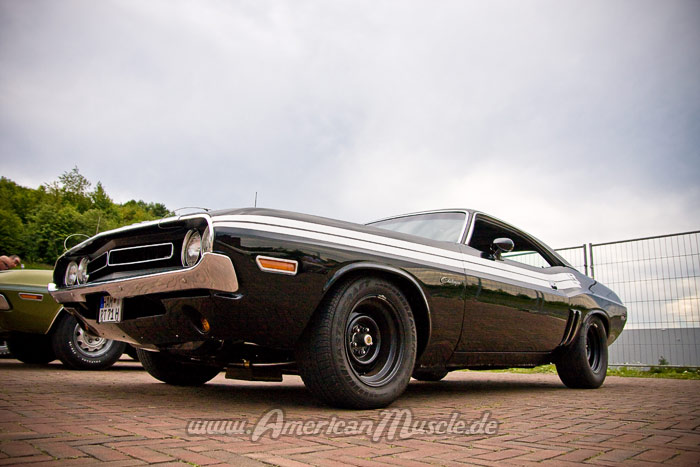







Comentário